If you need prototype circuit boards quicker and cheaper than third-party manufacturers can deliver, the Voltera V-One PCB printer may be the answer.
Printed circuit boards (PCBs) are an essential component of any electronic product prototype and designers typically go through several versions before landing on just the right one. This can mean a lot of time spent hand-soldering and drilling or money spent outsourcing the board each time the design changes.
These obstacles are sparking interest in automated, desktop-size, in-office solutions. Here we’ll dive deep into the capabilities of the V-One to develop PCBs, sensors, antennae, and heating elements right at your desk.
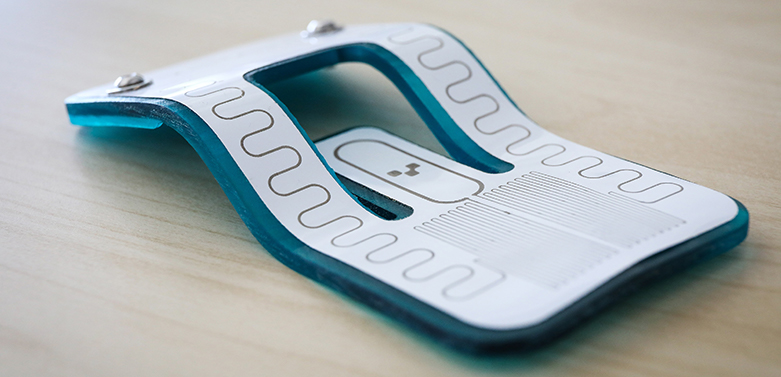
Voltera V-One Overview
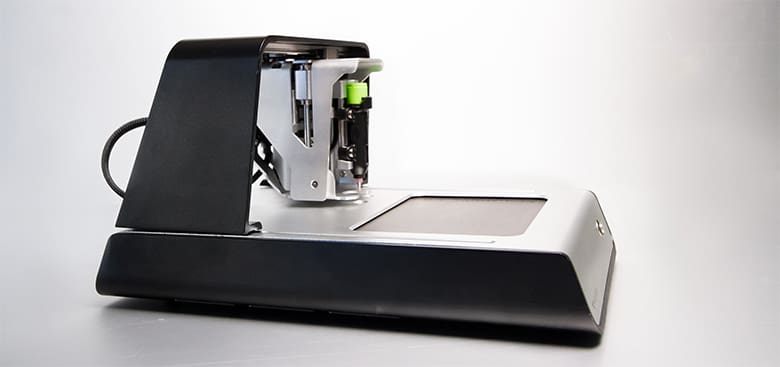
This compact multi-functional circuit printer from Voltera uses conductive ink to print your circuit board design from Gerber files produced on any CAD tool. You can also augment your factory-printed boards on the V-One with additional material and components.
The V-One boasts a sturdy metal construction with easy snap-in tools. Although there’s a bit of a learning curve and you may have to make some practice boards to get the hang of it, once you do, it’s pretty easy to use. Let’s take a closer look at the V-One’s features.
Conductive Ink & Paste
The performance you can expect from the V-One inks is similar to copper for digital, radio-frequency, and low-power circuits (bulk resistivity: 9.5E-7 Ohms.m, sheet resistance: 12 mOhms/sq).
The number of boards you are able to print with one ink cartridge ($99,99) will depend on size and complexity of the circuits you’re building, but a single ink cartridge equates to 100 m of conductive trace at 8 mm width, or 200 cm2 of solid pour. The ink cartridge has an official shelf life of six months and should be stored in the refrigerator when not used.
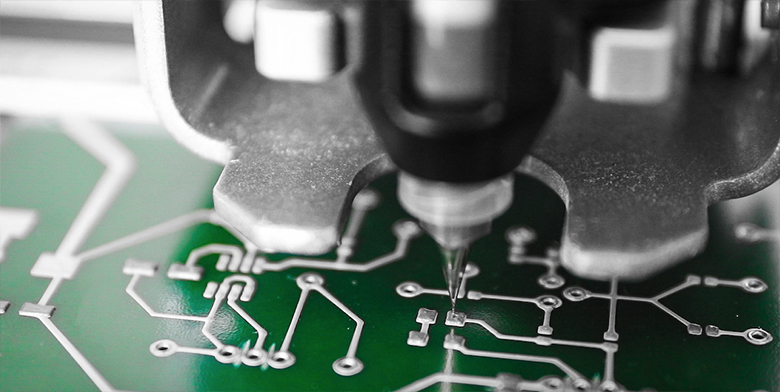
A precision dispensing system uses an internal leadscrew for fine fluid control that deposits ink and solder paste with a 0.65 mm pin-to-pin pitch. The V-One can dispense solder on pads as small as 0402 and ICs that have a 0.5 mm pin-to-pin pitch.
The V-One dispenses tin-bismuth-silver or tin-lead paste only on the pads you need. One solder paste cartridge ($49,95) will cover up to 11,000 0603 solder pads and has an official shelf life of eight months. It should be stored in the refrigerator when not used.
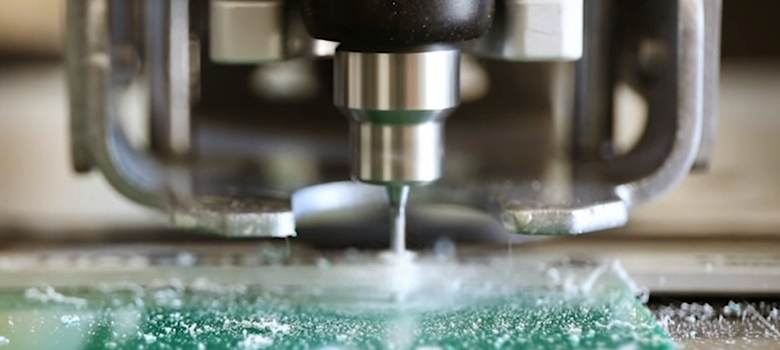
Drilling
The printer also has interchangeable drill heads for making variable width vias and thru-holes. V-One drill maintains a 3-mm runout even at high speeds. Different size drill bits, rivets, and other accessories you need to get started are included with the printer and more are sold on the Voltera website. A pack of 200 rivets, for example, is $12.
Circuit Beds
Create single or two-layer boards on the V-One with its 127 mm x 104 mm bed size. The V-One is material and substrate agnostic so you can print on a variety of hard and flexible substrates, including FR4, FR1, ceramics, PET, and Kapton. Voltera sells a variety of blank boards ready for printing your circuitry on including Arduino Mega and Uno templates, Feather, and Raspberry Pi B+ templates.
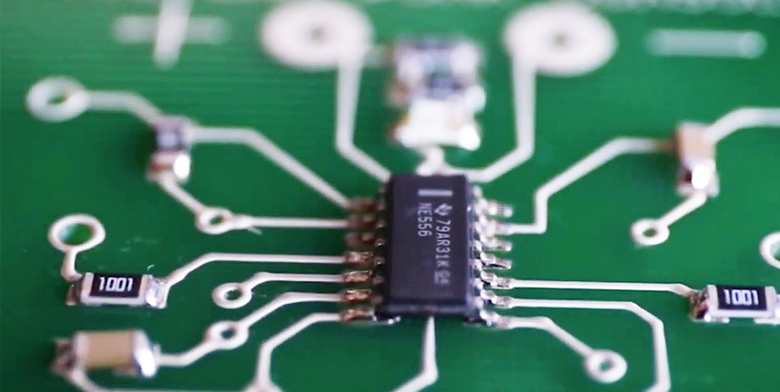
Soldering
Who doesn’t want to avoid the frustrations of hand soldering components? Whether your board is made at a factory or on a V-One you can apply lead-free paste is on your board just where you need it to gently position your components into place.
Even if you just want to use the V-One mainly for solder paste dispensing on fabricated boards, it still will save a lot of time (depending on your soldering proficiency).
Built-In Reflow Platform
Of you’ve ever accidentally damaged components with a soldering iron or were embarrassed to show your colleagues your messy solder joints, the V-One has a built-in 550W heated bed to reflow solder an entire board of SMD components quickly. The heated bed can reach a maximum temperature of 240 °C in about two minutes.
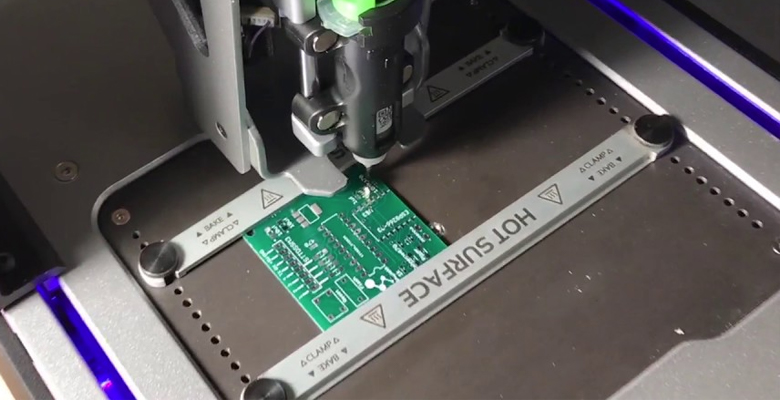
Software
The Voltera V-One is designed to work with open-source platforms like Arduino, Particle, and Raspberry Pi. The software included with the machine features straightforward tutorials to teach you the printing, soldering, reflow, and drilling workflows as you’re building. The Voltera V-One software comes in six languages: English, French, Korean, Arabic, Spanish and Russian.
Online at Voltera’s site you’ll find a library of handy tutorials and troubleshooting tips.
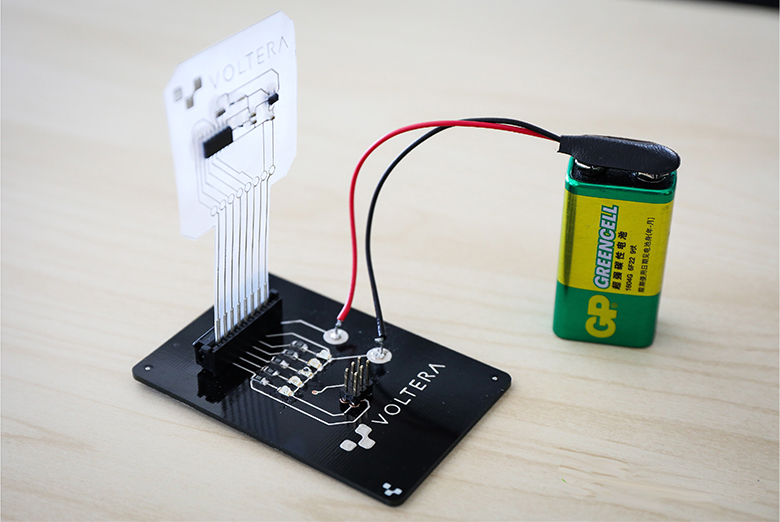
Printing Speed
Voltera says users can make a simple single-layer board in under an hour. A simple board could take about 5 minutes to print, 30 minutes to bake (the ink needs to be dried), and depending on how fast you place your components about 10-15 minutes to dispense solder paste and reflow (heat again).
This is one of the downsides of the Voltera is that it currently does not have an integrated pick-and-place feature for components, so they have to be placed by hand.
Price of the V-One
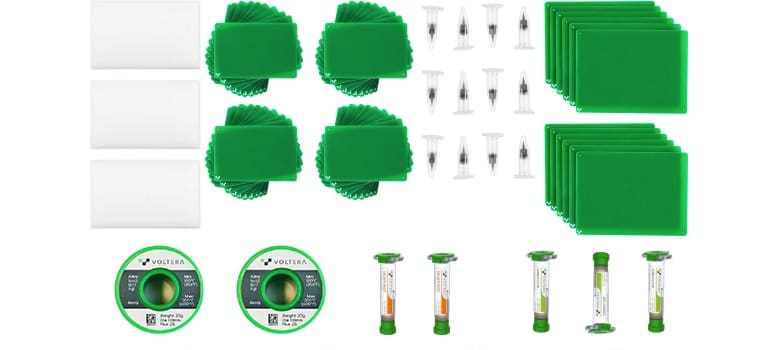
The V-One printer comes with a starter kit of supplies and retails for about $4,200, and necessary consumables can quickly add up.
- Printer: $4,200
- Ink: $100 per cartridge
- Solder paste: $50 per cartridge
- 10 substrates: $15
- Nozzles: $60
The company offers student and bulk discounts.
Lead image source: (Source: University of Waterloo, Canada)
License: The text of "Printed PCB Prototyping with the Voltera V-One" by All3DP Pro is licensed under a Creative Commons Attribution 4.0 International License.

